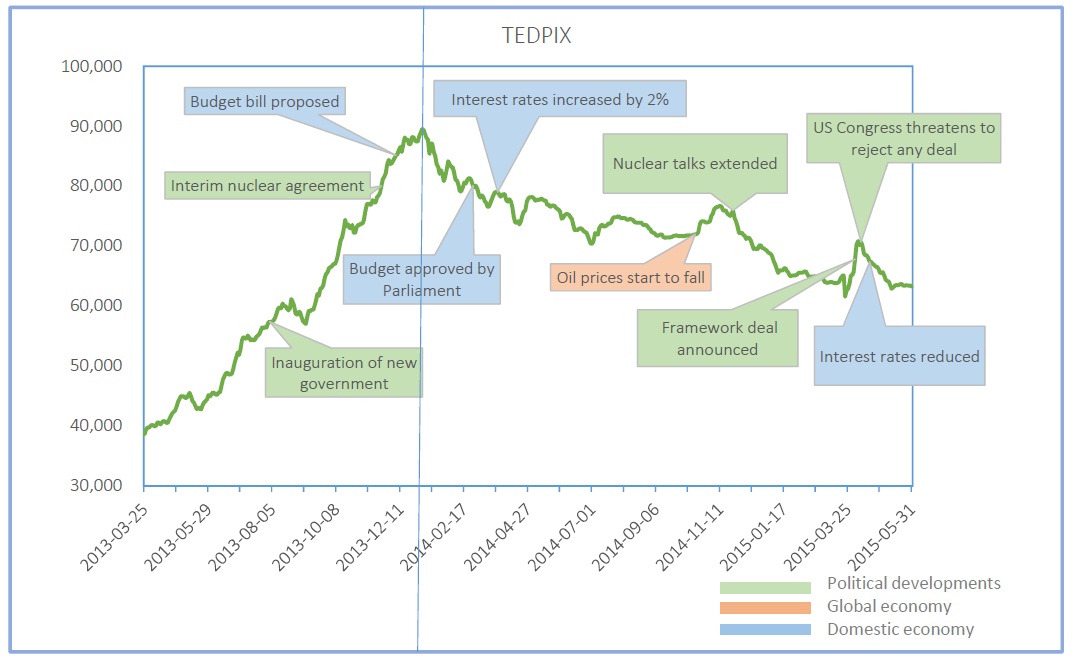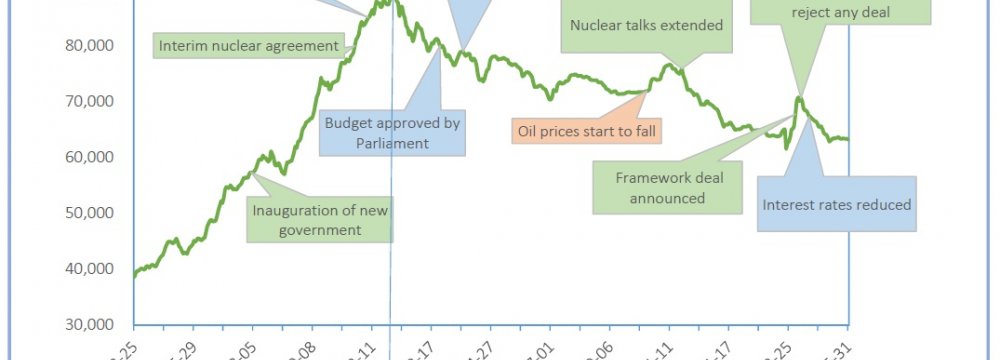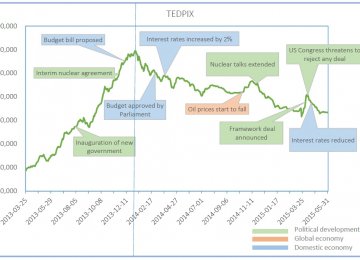Iran’s capital market has undergone tremendous fluctuations owing to the country’s ambiguous economic status in the past two years. While many here at home and overseas have faith in the market’s prospects, the benchmark has been notching the support lines and the overall market cap dwindling since January 2014.
What are the contributing factors and how are the systematic risks to be rooted out? Political developments, global and domestic economy appear to be predominant factors as indicated by the figures in the following diagram.
An interim agreement reached between Iran and P5+1 (the five permanent members of the UN Security Council plus Germany) in November 2013—shortly after the new administration took office in August 2013— clearly showed the significance of political developments on the bullish growth in stock markets. Soon after, the contractionary fiscal policies proposed by the government in the annual budget bill led to a sudden plunge in the overvalued market.
As Iran and the major world powers approach the June 30 deadline for a comprehensive nuclear agreement, the benchmarks are expected to rally; but to what extent? Answering the question needs a thorough analysis, as individual and institutional investors have already lost their faith. The market remains dormant.
The global economic perspective implies the important role of oil in many economies; Iran being no exception. Some oil-rich economies such as Russia and Arab countries’ benchmarks experienced a sharp plunge after the global crude oil prices dropped from their June 2014 peak of $107 per barrel to as low as $45 per barrel in just a few months. But Iran’s benchmark remained immune, thanks to the preventive microstructure of the stock market such as stock price fluctuation limit. While the global markets partly recovered their losses when oil prices rebounded slightly in 2015, domestic markets did not suffer the fallout. However, experts are anticipating that a final nuclear agreement will improve the situation.
The domestic economic perspective, including recession and high inflation, have also been affecting the benchmark. While the efforts of the administration of President Hassan Rouhani to curb inflation through such policies as increasing interest rates partly succeeded in remedying the economy, they crippled the domestic capital market.

Now, with the inflation confined and the economy getting back on track, the Central Bank of Iran has reduced the interest rates to help the market rebound. Many are expecting a return to growth in the near future.
Even though ambiguities still exist in one way or another, a review of the current state of affairs indicates a promising future for Iran’s capital market. The gradual downward trend may haunt the market for a while, but many undervalued companies are currently on standby to experience a boom.






